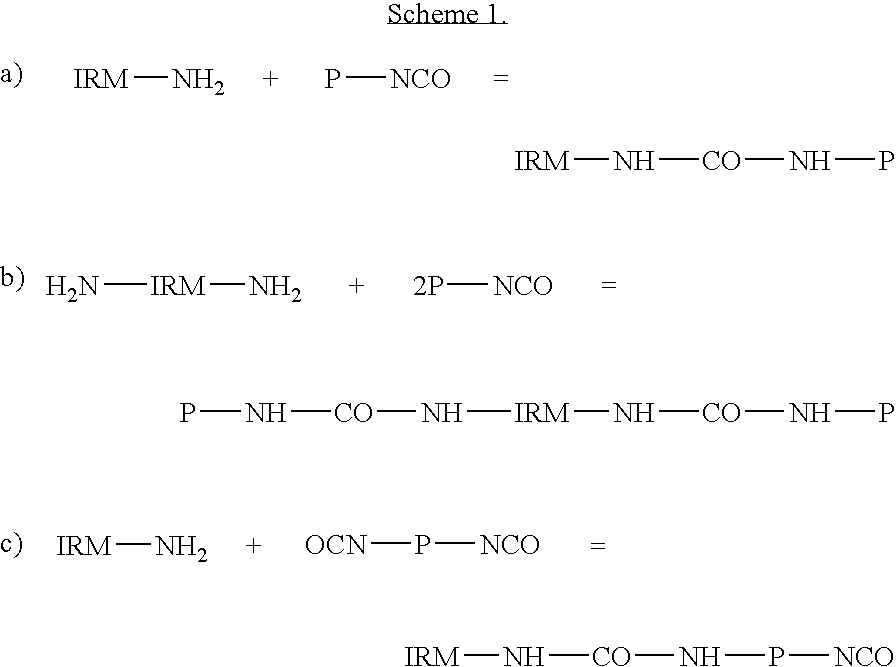Infection resistant polymers, their preparation and uses
- Summary
- Abstract
- Description
- Claims
- Application Information
AI Technical Summary
Benefits of technology
Problems solved by technology
Method used
Image
Examples
example 1
[0084]Polyhexanide Starting Material
[0085]400 ml of a 20% w / v aqueous solution of polyhexanide (Zeneca Biocides) was placed in a Spectra / Por® membrane (MWCO: 2,000) and was dialysed against 10 liters of deionised water for 16 hrs. The dialysed polyhexanide was then placed in stainless steel freeze-drying trays and was freeze dried for 72 hrs.
[0086]The yield of dry crystalline powder of polyhexanide was 40 g.
example 2
[0087]Partial Free-Base Polyhexanide
[0088]In this example only 1 in 6 biguanide hydrochloride groups are neutralised.
[0089]1 g (4.5662×10−3 moles of biguanide hydrochloride groups) of polyhexanide powder (from Example 1) was dissolved in 80 ml deionised water. The number of moles of sodium hydroxide required to neutralise 1 in 6 biguanide hydrochloride groups of polyhexanide is 7.61×10−4 moles (0.0304 g, NaOH). Sodium hydroxide (0.0304 g) was dissolved in 50 ml deionised water and added drop-wise to the polyhexanide solution over a period of 1 hr. The solution was then freeze-dried yielding a dry crystalline powder of polyhexanide partial free-base (Ph.P free-base).
example 3
Polyhexanide / Polyisophorone Urethane Polymer
[0090]1.027 g (7.61×10−4 moles) Poly (neopentyl glycol adipate) isophorone diisocyanate terminated (PNGAID, Mn 1350) (Aldrich Chemical Co.) was dissolved in 50 ml dichloromethane. 1 g of Ph.P free-base (from Example 2) was dissolved in 50 ml ethanol and was vigorously stirred. To this polyhexanide was added the above PNGAID solution over a period of 1 hr, to form urethane urea bonds. The solution was neutralised with 0.019 ml of 4M hydrogen chloride in 1,4 dioxane.
[0091]Infrared spectrum showed the disappearance of the band at 2265.9 cm due to the N═C═O group.
[0092]
[0093]
PUM
| Property | Measurement | Unit |
|---|---|---|
| Area | aaaaa | aaaaa |
| Area | aaaaa | aaaaa |
| Area | aaaaa | aaaaa |
Abstract
Description
Claims
Application Information
 Login to View More
Login to View More - R&D
- Intellectual Property
- Life Sciences
- Materials
- Tech Scout
- Unparalleled Data Quality
- Higher Quality Content
- 60% Fewer Hallucinations
Browse by: Latest US Patents, China's latest patents, Technical Efficacy Thesaurus, Application Domain, Technology Topic, Popular Technical Reports.
© 2025 PatSnap. All rights reserved.Legal|Privacy policy|Modern Slavery Act Transparency Statement|Sitemap|About US| Contact US: help@patsnap.com



